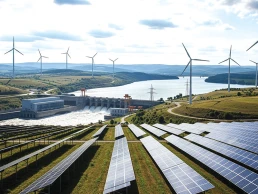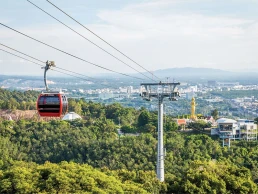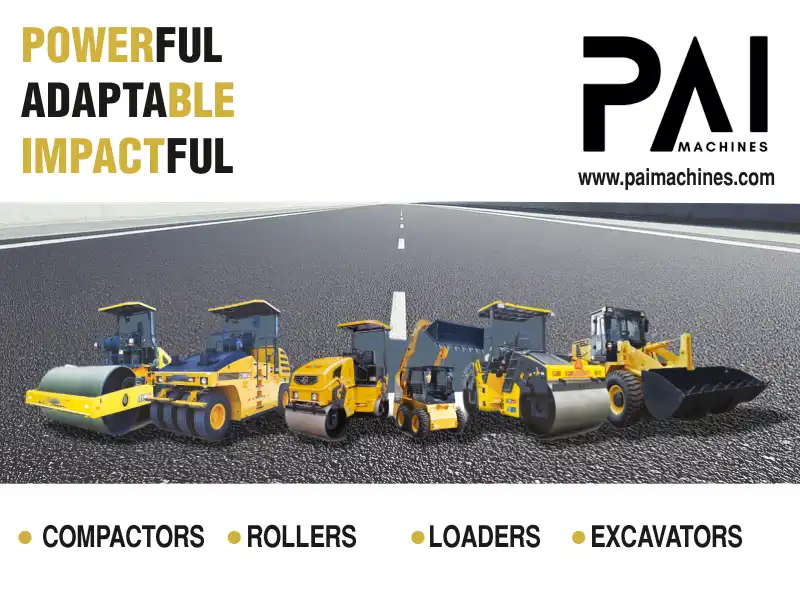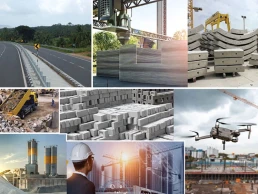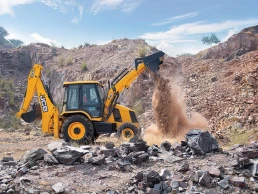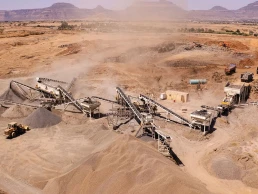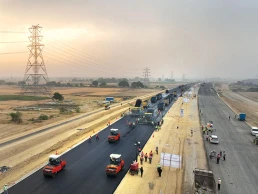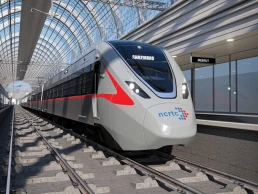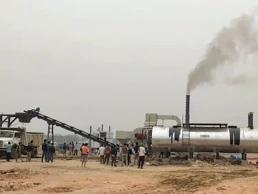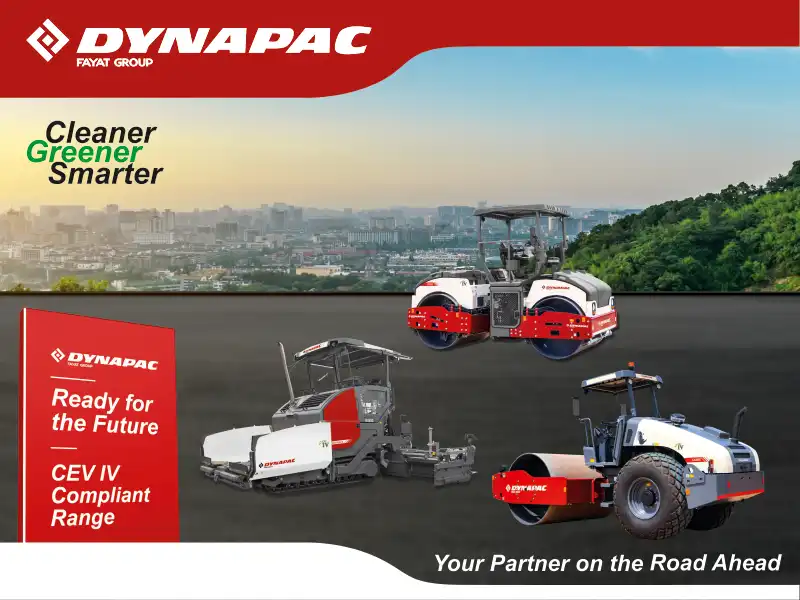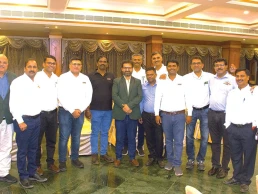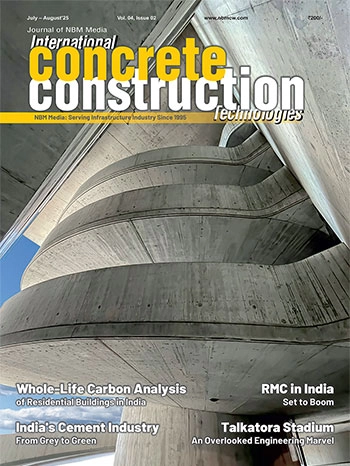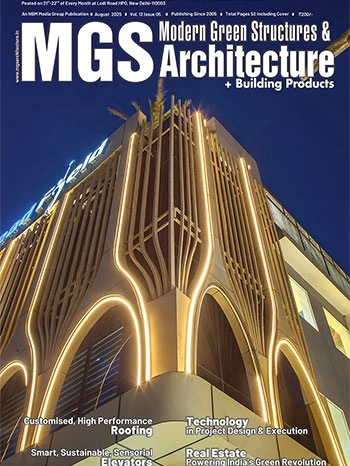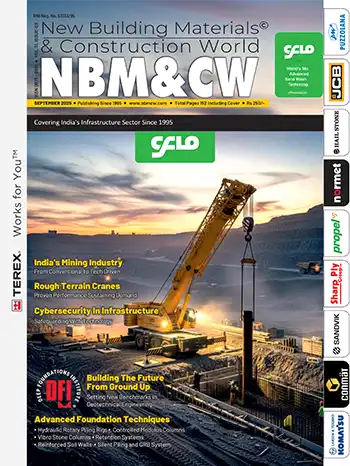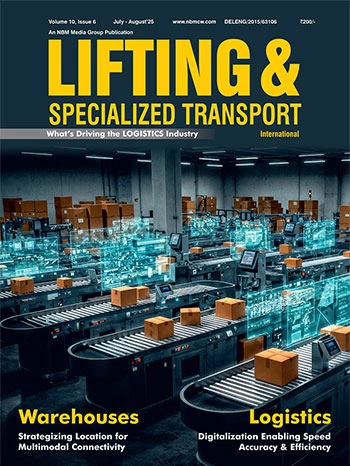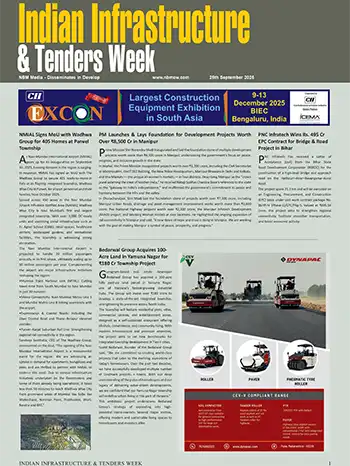Ready Mix Concrete Expectations of a Big Boom in India
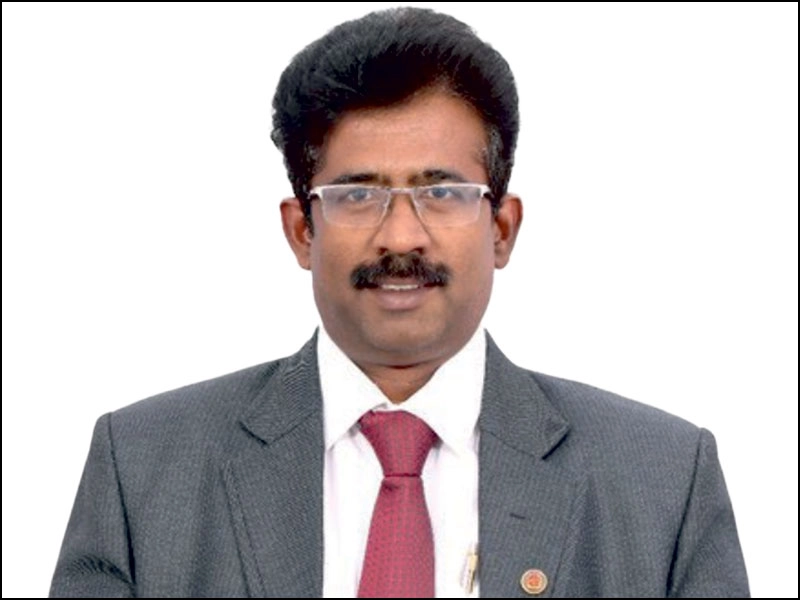
Dr. L.R. Manjunatha, Concrete Technologist & Head – Business Development, JSW Cement, discusses the rising adoption of RMC, its sustainability benefits, quality and regulatory advancements, and its growing role in meeting India’s urban and infrastructure needs.
India’s Ready Mix Concrete industry is at the forefront of a construction revolution driven by rising demand, sustainability mandates, and the shift from site-mixed to quality-controlled concrete. With innovations in green materials, digital batching, and value-added products, RMC is no longer an option, it’s a necessity for durable and environment-friendly infrastructure. In fact, RMC has been playing a pivotal role in changing the landscape of India in terms of quality and faster construction of buildings with lesser manpower.
What’s more, the quality of concrete produced in RMC plants is highly consistent. It provides a high degree of overall strength of hardened concrete that enhances the performance of the structure after maturity. Plus, RMC operations are highly mechanized and fully controlled through electronic controls, which reduces the probability of errors during operations. The manufacturing process is also eco-friendly and brings down pollution caused by dust at construction sites.

Understanding RMC and its Advantages
RMC is a specialized material in which cement, aggregates, and other ingredients are weight batched at a plant in a central or truck mixer before delivering it to the site in a condition ready for placing by the customer. It is manufactured at a place away from the construction site, and transported to the site. RMC plants are proliferating due to the benefits of using ready-mixed concrete, including quality control and economy, along with the following:
- Customers get uniform and assured quality of concrete.
- No need for storage space for basic materials at project site.
- No need for procuring or hiring plants and machinery for concrete production and laying.
- No wastage of basic materials like coarse and fine aggregates.
- No need for labour for concrete production.
- Faster construction speed.
- Noise and dust pollution at project sites is reduced.
- Reduced cost of making concrete.
- Durability of concrete is assured.
- Documentation of the mix design.
Environmental benefits
Ready Mix Concrete incorporates industrial by-products like fly ash, GFBS and microfine additives for use in concrete, for higher durability, sustainability, significant reduction in pure cement consumption, and reduced carbon emissions.
RMC is also instrumental in reducing the depletion of river sand and other precious natural resources. By purchasing RMC concrete instead of cement, sand and aggregates directly by consumers, project sites can be kept relatively pollution-free. Products like structural lightweight concrete and fire safe concrete available through RMC help buildings reduce the energy costs as well as increase the fire resistance of the buildings.
Very often, highly stringent pollution norms are insisted upon for Ready Mix Concrete plants by municipal authorities, in many cases, more than the norms placed on the construction sites. However, it needs to be considered that the use of Ready-Mix Concrete reduces traffic congestion and dust pollution created within many urban locations due to random plying of construction materials across the city.
It would be beneficial for the city environment to provide SOPs and quicker permissions for environmentally certified Ready Mix Concrete plants within planned zones of the city. Users of RMC should also insist on using concrete from environmentally conscious, QCI certified plants with superior quality management systems. Such steps would help strengthen and organize the RMC industry.
Standardization bodies and government institutions are increasingly mandating the use of concrete from only certified plants and companies. This would help support the overall development of safe and sustainable construction.
“The future of construction lies in consistency, sustainability, and speed—and Ready Mix Concrete delivers on all three.”
India’s RMC Industry: Current Market Size and Growth Drivers
India’s Ready-Mix Concrete (RMC) industry has been on a consistent growth trajectory since the establishment of the country’s first commercial RMC plant in Pune in 1991. The industry gained significant momentum with the entry of corporate players like ACC Cements and Unitech Construction in 1993, who set up RMC plants in Mumbai to explore the commercial potential of mechanized concrete delivery.
Over the years, the market has expanded rapidly, with the participation of major players like Ultratech, Prism Johnson, Nuvoco, Infra Market, RDC Concrete, Aparna, Adani, Ramco, ICL, BANGUR RMC, and several regional players such as S.V. Concrete, Skyway RMC, SWASTIK RMC, Kalokhe RMC – Pune, Sharvani RMC, Uno Concrete, My Home Concretes, SUN X Concrete, and RAY MIX Concrete. Currently, RMC plants are operational in more than 125 cities and regions across India.
In 2025, India’s RMC market size is estimated to be around 270–280 million cubic meters, with expectations to reach 375–390 million cubic meters by 2030, growing at a CAGR of 7–7.5%. This growth is driven by stricter environmental and pollution control regulations, which are prompting a shift from site-mixed concrete (SMC) to ready-mix concrete (RMC), as well as by growing urban demand and infrastructure needs.
India's RMC sector holds a 6.25% share of the Asia-Pacific market as of 2022. The industry is witnessing a strong push from both central and state governments through investments in modern infrastructure projects like high-speed rail corridors, metro rail systems, airports, expressways, and river-linking programs. A notable example is the Smart City Mission, which has earmarked USD 24.3 billion for urban transformation.
Moreover, construction methodologies are evolving, with increasing adoption of automated batching plants and quality control systems, ensuring product consistency, reducing wastage, and improving sustainability.
The Indian cement industry currently has a capacity of 465 MTPA, with an installed capacity of over 660 MTPA. Of this, 23–25% of cement is consumed by commercial and captive RMC plants. By FY2030, this is expected to rise to 30–33%, as infrastructure and housing demand increase. In contrast, developed nations like Japan, the USA, Australia, and many European and Gulf countries consume 70–90% of their cement through RMC, due to strict bans on SMC.
Key growth drivers include:
- Rapid urbanization, with an estimated 40% of India’s population living in urban areas by 2030
- Demand for modern housing, smart cities, and sustainable infrastructure
- Labour shortages, making SMC less feasible for high-volume or time-sensitive projects
- Increased awareness and use of eco-friendly concrete additives like Fly Ash, GGBS, M-Sand, micro-silica, and ultrafine GGBS
- A shift in preference among developers and contractors toward consistent quality, reduced material waste, and faster construction timelines
While awareness about RMC is still limited to metros and Tier 1 & 2 cities, its use is expected to rise significantly across infrastructure projects, given the construction industry’s growing focus on durability, sustainability, and compliance with environmental norms.
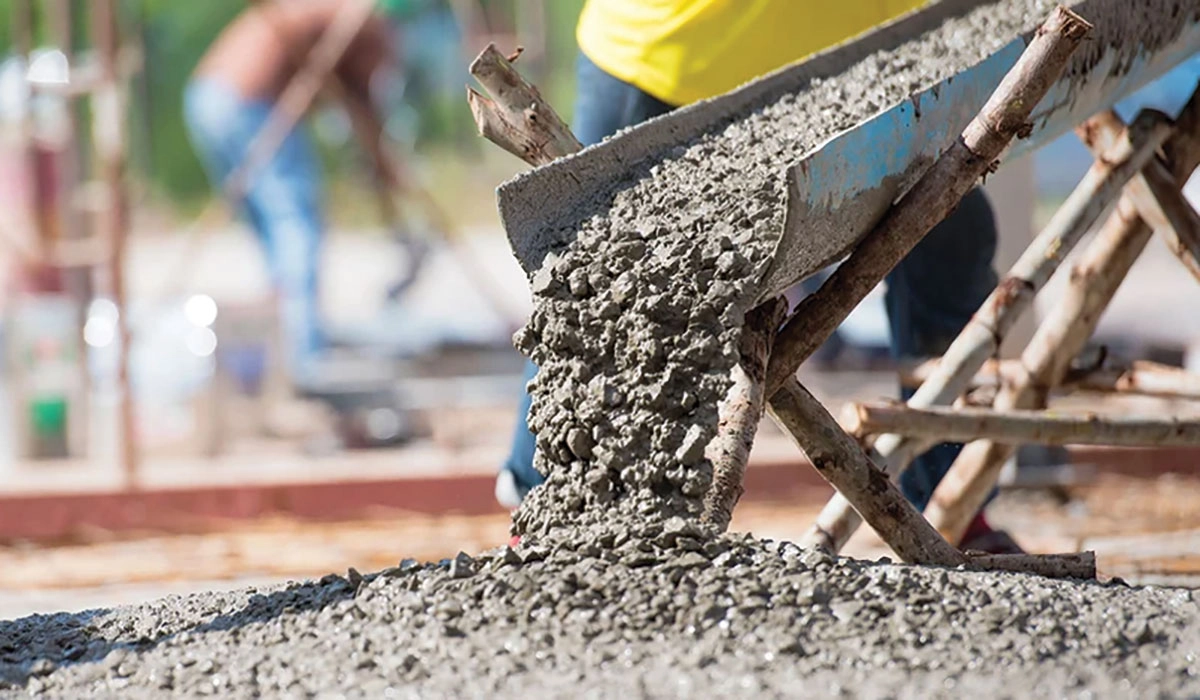
Competition in India’s RMC Industry
The Indian ready-mix concrete market is characterized by intense competition among established corporate players. These leading producers are driving market evolution through continuous product innovation, particularly in developing specialized concrete variants for different applications and environmental conditions. Variants include SCC, HPC, high strength concretes, temperature-controlled concretes, and value added products(VAP).
Operational agility is demonstrated through investments in modern batching plants, automated systems, and digitally managed concrete-transporting fleets. Strategic moves focus on vertical integration, with cement manufacturers leveraging their production capabilities to strengthen their ready-mix concrete offerings.
Market leaders are actively expanding their geographical presence through new plant establishments, particularly in tier-2 and tier-3 cities, while simultaneously upgrading existing facilities with advanced technology. Companies are also emphasizing sustainability through green concrete solutions and recycling initiatives to align with evolving industry standards and customer preferences.
However, the entry of many small local players who do not have technical capabilities and well trained manpower is affecting the quality of ready mixed concrete produced in the country. The time has come now for customers to choose between quality ready mixed concrete products from QCI certified plants or local RMC companies where quality of the product is questionable.
Challenges in Setting up RMC plants in Urban Clusters
Setting up commercial plants in metro cities is a challenge due to space constraints and traffic regulations. The civic bodies need to allocate specific locations within the city limits to allow RMC operators to meet the growing demand of urbanisation. RMC is preferred globally as an environmentally friendly business since the concrete is produced at a centralised batching plant and transported in closed transit mixers. The fast urbanisation of Indian cities will need RMC plants to be set up within city limits, as it is a perishable product. This should be part of urban town planning.
RMC usage should be encouraged by lowering the GST rates, making it more affordable; this in turn will also reduce pollution, wastage of raw materials, and help in early execution of projects.
QQ/QC Norms for RMC Plants
Providing QA and QC is more complex for RMC. This is because RMC is an unfinished product at the time of delivery. In its ‘as sold’ condition, it is perishable and will not remain in plastic and unhardened condition beyond a limited time.
The quality of RMC depends on the selection and approval of materials, quality of admixtures, sampling, testing methods, production, delivery system, equipment and plant. It is advisable to use RMC from a certified manufacturer to ensure all these parameters. It is also mentioned in the IS code, “For effective implementation of the provisions of the standard, it may be desirable that the ready-mixed concrete plants operate their system under a third party certification scheme to ensure operation of a well-structured system and to build confidence in the users of such concrete.”
To ensure quality RMC production, the Ready-Mixed Concrete Manufacturers Association (RMCMA) has made tremendous efforts in evolving a quality scheme for RMC. A Quality Team follows the best practices of advanced countries that are suited to Indian conditions. It was also decided to strictly follow the relevant provisions from the prevailing Bureau of Indian Standard (BIS) specifications such as IS 4926 (RMC), IS 456 (plain and reinforced concrete), IS 383:2016 (fine and coarse aggregates), IS 9103(chemical admixtures), etc.
The quality scheme developed by the Quality Team is in two parts contained in the meticulously prepared Quality Manuals - Part I and II. The first part is a thorough annual audit of RMC production facility based on an extensive check list contained in QC Manual Part I. The Check List covers all activities in the production facilities and are grouped under six heads: material storage and handling; batching equipment; central mixer; ticketing system; delivery fleet, and laboratory.
This guideline document recommends a broad framework of QA and QC which is strongly recommended for adoption by RMC producers as it would help them in establishing their own system which would provide proof of their capabilities in producing quality concrete consistently.
R&D, Innovation, and Sustainability as Differentiators
For incumbent players to maintain and increase their market share, focus needs to be placed on technological advancement and product differentiation. Companies must invest in research and development to create innovative concrete solutions that address specific customer needs while maintaining cost competitiveness. Establishing strong relationships with key construction companies and government agencies is crucial, as is developing efficient supply chain networks.
Environmental compliance and sustainability initiatives are becoming increasingly important, with companies feeling the need to invest in eco-friendly production processes and products to maintain their competitive edge.
Contenders looking to gain ground in the market should focus on identifying and serving underserved regions and market segments. Building strong technical capabilities, investing in modern equipment, and developing efficient logistics networks are essential for new entrants to be competitive. The ability to offer customized solutions and maintain consistent quality will be crucial for success.
Companies must also prepare for potential regulatory changes, particularly concerning environmental standards and safety requirements. As the market evolves and customer expectations rise, the development of value-added services and digital capabilities will become increasingly crucial.
At the same time, cement consumption is expected to double year-on-year, driven by the increasing shift from site-mixed concrete (SMC) to ready-mix concrete (RMC), along with pent-up demand from the infrastructure and housing sectors.
Based on IS codes pure cement can be replaced by mineral additives like fly ash up to 15-35% and GGBS up to 25 - 70% and microfine materials for making green blended concretes by way of RMC in India. This will help in bringing down the total CO2 emissions in concrete production and make construction more sustainable and durable.
Improving Efficiencies in Concrete Supply Chain
The industry is witnessing significant technological advancements in concrete technology and delivery systems, with manufacturers incorporating digital solutions for real-time monitoring and quality control. Earlier, the raw materials used to be stacked on public pathways and roads, and mixed at sites and placed manually. Now, concrete can be produced elsewhere, and delivered directly into the contractor’s formwork and the truck mixer, without causing traffc congestions. Due to this, the supply chain in the concrete industry is evolving, with vertical integration becoming increasingly prevalent among major cement players. Companies are establishing in-house production facilities for aggregates and are investing in modern transit mixers equipped with GPS-based fleet tracking systems. This integration has helped manufacturers maintain better control over raw material quality and delivery timelines.
Conclusion
The RMC Industry will continue to grow despite any downturn in the economy, mainly on account of migration of concrete consumers from traditional site mixed concrete to ready mixed concrete consumers due to the added advantages of RMC vis-à-vis SMC. Along with the use of new and more innovative and sustainable materials and technologies, there will be a growing demand for Value Added Products (VAP) and special concretes. Companies in the RMC Industry, cement, admixtures, and cement production equipment should gear up to meet the market demand by following stringent quality and product specifications.
Reference
Source: https://www.mordorintelligence.com/industry-reports/india-ready-mix-concrete-market
For more details, please email:

































